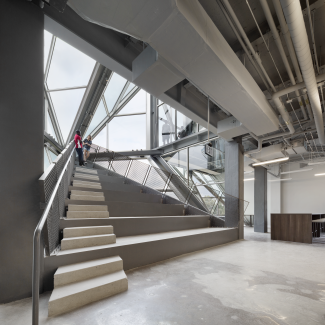“With some of the world’s most iconic structures, it’s only fitting that architects would use the New York of old to inspire the New York of new.
Ask anyone to name the most iconic building in New York and chances are they’ll name one of the city’s stunning Art Deco skyscrapers, such as Empire State Building or the Chrysler Building. As contemporary glass towers pop up throughout the skyline, these structures have remained relevant and cherished parts of the architectural landscape. For a new research project, architecture firm Hollwich Kushner set out to learn from the city’s beloved Art Deco buildings. The study, titled New(er) York, reinterprets 12 structures from Wall Street to Central Park West using modern construction methods. ‘We asked ourselves: What happens when we study these icons and apply contemporary techniques?,’ says Matthias Hollwich, HWKN principal and the lead designer on the project. ‘It turned out that we were able to capture a unique personality, without copying the original.’
‘The image of New York is shaped through its Art Deco icons,’ says Hollwich. ‘We believe that local qualities have a unique value that should be absorbed in the design of buildings to stand out against mass homogenization.’ Each building was studied and 3-D modeled, paying particular attention to the proportions. The firm then reinterpreted the massings and added contemporary façades. The finished designs maintain the spirit of the Art Deco masterpieces, while adding a modern twist. For example, the Flatiron building maintains its signature shape, but floor-to-ceiling glazing brings it into the 21st century.
The firm has already begun incorporating the learnings from the study into its designs, using historic elements to add character and personality. An office building under construction in Williamsburg, Brooklyn, gives a nod to the neighborhood’s past through the use of red brick and factory-sized windows, while the firm’s design for the Pines Pavilion on Fire Island features cedar cladding and exposed studs as a reference to the nearby boardwalk. ‘There is an endless amount of inspiration we can take from different cities and different eras,’ says Hollwich. ‘That is what we love about the future of architecture.’”


